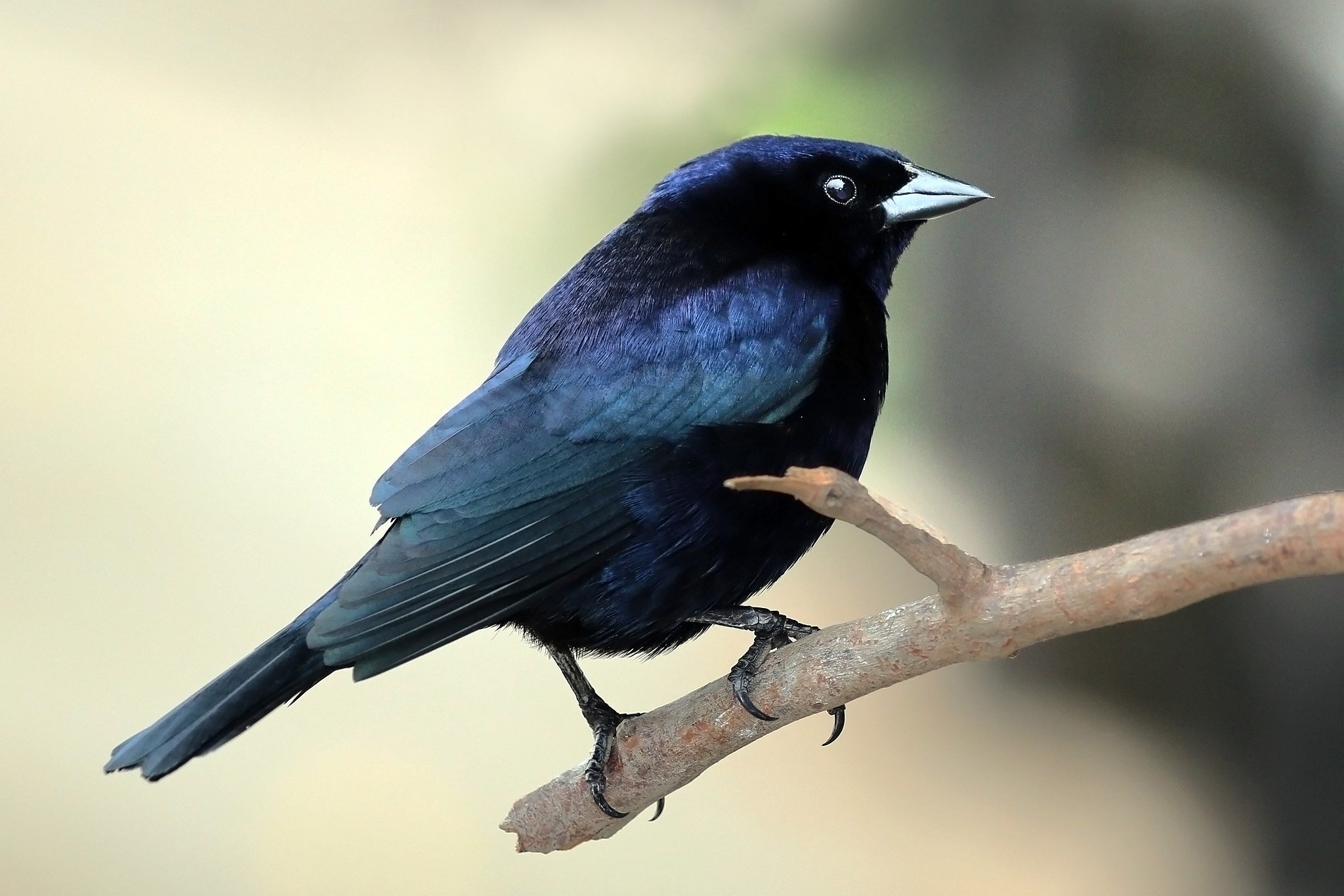Shiny Cowbird
Shiny Cowbird by Charles J. Sharp
Scientific Name: Molothrus bonariensis
Status: Least Concern
Range:South Florida(North America), the Caribbean, South America
Habitat: Gardens, Agricultural Areas, Grassland, Shrubland
Breeding Season:Variable (October - January/Breeding season of major hosts)
Description
The Shiny Cowbird is an invasive bird species in Jamaica. It is a brood parasite laying its eggs in the nest of a wide variety of other species who make suitable hosts. It leaves incubating, feeding and rearing to host birds who believe them to be their eggs.
Shiny cowbirds display sexual dimorphism resulting in male and female specimens being different in appearance. Male Shiny Cowbirds have a blue-black plumage with a purple shine on their heads, neck, breast and a blue shine on its wings. Females are brown in colour with areas of white on its eyebrows and throat. Shiny Cowbirds can get up to 18 cm in length and are generally 31 - 40 g.
Range
The Shiny Cowbird is native to South America but has now established populations in the Caribbean and the South of Florida.
Habitat
Shiny Cowbirds can be found in a wide variety of habitats such as agricultural areas, grasslands, forested areas, deforested areas and mangroves.
Diet
Shiny Cowbirds are are omnivores. Their diet mostly consists of insects such as crickets, caterpillars, butterflies and moths and beetles along with seeds and nectar.
Mating
The Shiny Cowbird utilizes a variety of mating systems (monogamy, polygyny etc.) depending on the amount of host nests and their proximity nest to cowbird population and the gender ratio in the population.
Their breeding season starts in October and ends in January. The breeding season of a particular population is often the same as the breeding season of a host species close by.
Shiny Cowbird eggs are either all white or have gray or red-brown spots. Shiny Cowbirds lay one egg in the host's nests and removes one host egg from the nest. This egg is sometimes eaten by the female cowbird.
Some host species are able to identify the alien eggs and eject or destroy them or abandon the nest all together. Cowbird eggs often hatch one day before host eggs and are usually larger in size than the host's eggs. Their fledglings are often fed more than the host young because of their loud persistent cries.
Conservation Status
Least Concern

